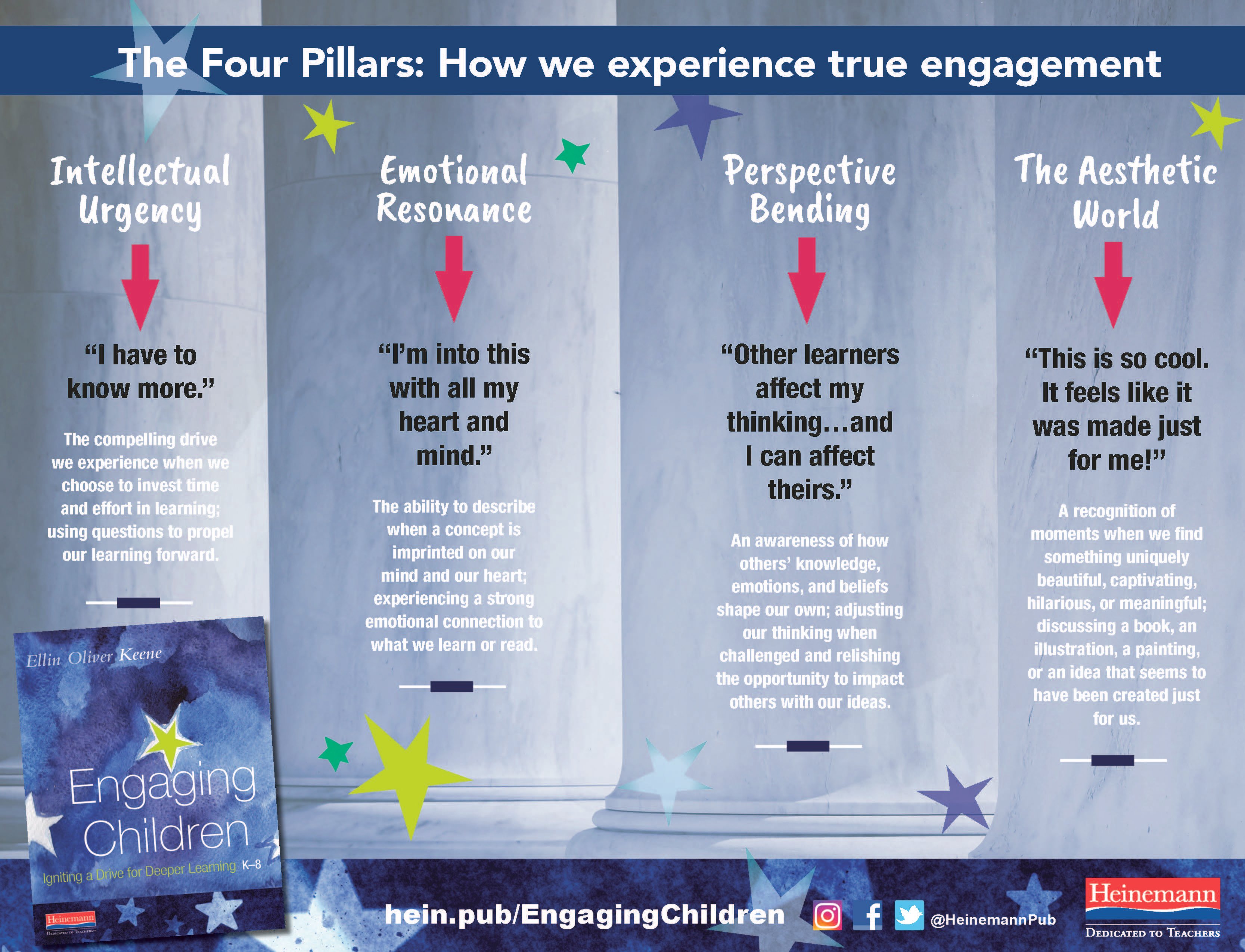
Welcome back to the Heinemann Professional Development Professional Learning Community (PLC) series. Each month, we'll share a post designed to provoke thinking and discussion, through a simple framework, incorporating mini-collections of linked content.
Use these as a learning module during your professional development time, whether in a team, a professional learning community (PLC), or on your own!
♦ ♦ ♦ ♦
by Jaclyn Karabinas
“We are not only role models for learning; we are role models for living.”
—Regie Routman in Reading Essentials (2003).
Connect
What is something you absolutely love to do, explore, or learn about when given the chance?
Can you describe your state of mind when you are involved in this activity? What about your learning process or ability to recall things you’ve learned in relation to this activity?
![]() Consider
Consider
How does naming and describing your own preferred experiences provide insight to signs of true engagement among students in your classroom?
![]() Educate
Educate
Explore the four pillars of engagement—as defined by Ellin Keene in her new book, Engaging Children— shown in the graphic below. For more about these pillars, check out this blog post.
![]() Reflect
Reflect
Carve out a few minutes to write, list, or talk about a few examples of things you have experienced that represent one or more of these pillars of engagement.
Now, do the same thing by reflecting on these pillars through observations of your students' experiences.
![]()
Practice
Make a two-column chart. On one side, title it with your experience. On the other side, title it with the student experience. Underneath each one, list what you recall about the arrival at the experience, immersion in experience, and the post-reflection or sharing of that experience.
What parallels do you find?
![]()
Extend
Watch this video interview between Ellin Keene and Tom Newkirk where they discuss the importance of teachers having their own passions, not necessarily to pass that specific content knowledge on to kids, but to gain insight into the cognitive, emotional, and aesthetic nature of being “caught up” in learning.
![]() Refine
Refine
Take a few minutes to define the following terms now that you have had some time to think through what engagement might really look like and feel like.
- Compliance
- Participation
- Motivation
- Engagement
![]() Act
Act
Make a simple plan to monitor moments of perceived engagement for yourself and for your students over at least a one-week period. Keep a sheet of paper on your desk, a notebook page marked with a post-it, or use a note taking app on your phone.
After that time, go back over these lists and review the pillars of engagement. What was present? What was not? What seemed to be engagement at first, but you now believe it to be something else?
If you noticed limited true engagement for yourself, make a goal for next week to change that. What can you put on your calendar to allow time for pursuing something that engages you to feel refreshed and re-connected with learning?
If you noticed limited true engagement for your students, look at your plans for students and ask yourself: Where can I make space and time for students to engage in a topic in a way that they lose themselves in learning?
For Further Reading:
- Modeling Engagement with Ellin Keene and Tom Newkirk
- What if our classroom environment and routines offered choice? By Debbie Miller



